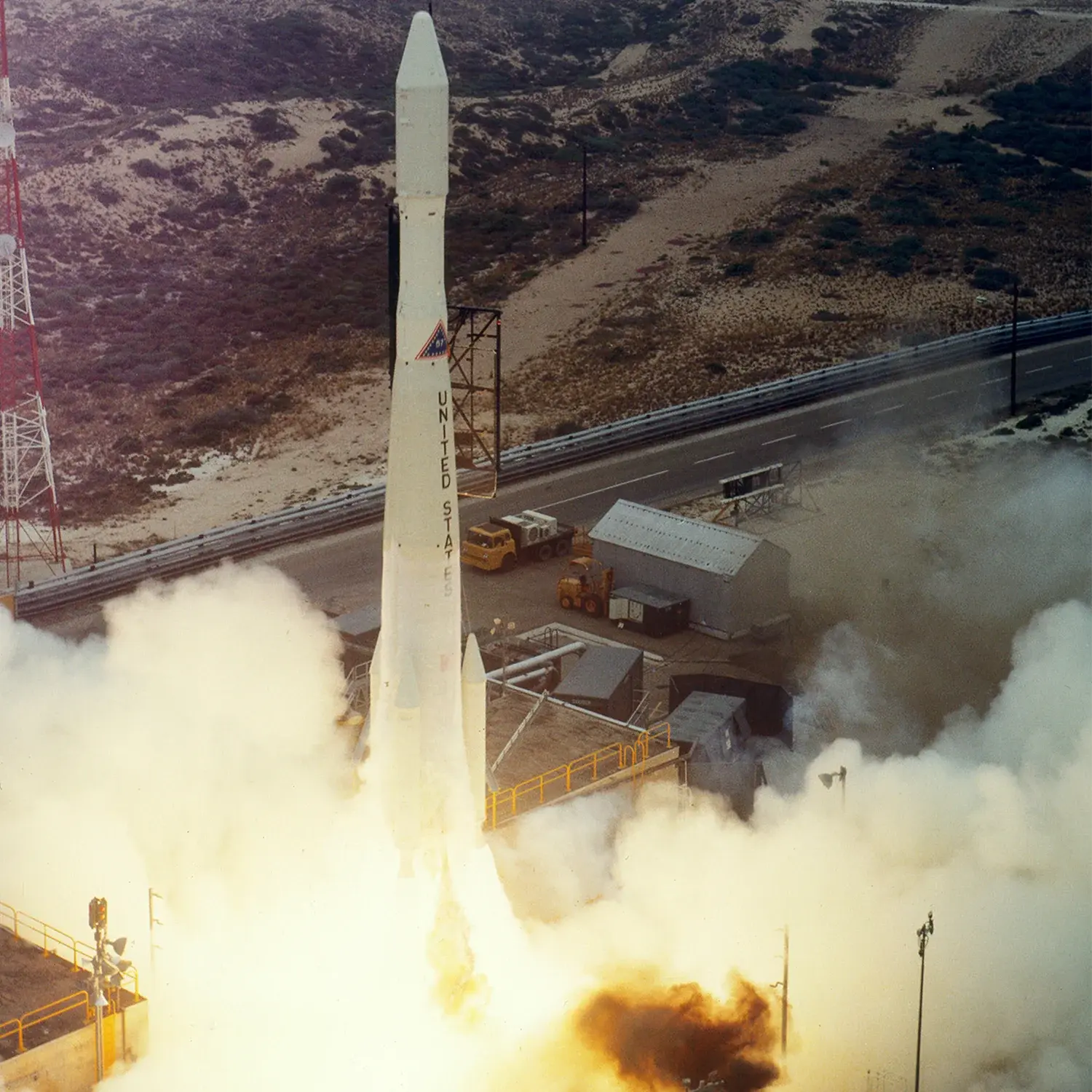Explorer 38 (RAE-A)
Launch Success
Liftoff Time (GMT)
17:26:50
Thursday July 4, 1968
Mission Details
Explorer 38 (RAE-A)
The RAE-1 also known as RAE-A or Explorer 38 spacecraft measured the intensity of celestial radio sources, particularly the sun, as a function of time, direction, and frequency (0.2 to 20 MHz). It carried two 750-ft-long V-antennas, one facing toward the earth and one facing away from the earth. A 120-ft-long dipole antenna was oriented tangentially with respect to the earth's surface. The spacecraft was also equipped with one 136-MHz telemetry turnstile. The onboard experiments consisted of four step-frequency Ryle-Vonberg radiometers operating from 0.45 to 9.18 MHz, two multichannel total power radiometers operating from 0.2 to 5.4 MHz, one step frequency V-antenna impedance probe operating from 0.24 to 7.86 MHz, and one dipole antenna capacitance probe operating from 0.25 to 2.2 MHz. RAE-1 was designed for a 1-year minimum operating lifetime. The spacecraft tape recorder performance began to deteriorate after 2 months in orbit. In spite of several cases of instrument malfunction, good data were obtained on all three antenna systems.
Medium Earth Orbit
1 Payload
Rocket

Launch Site
Stats
Delta J
1st
Mission
1st
Mission of 1968
1968
61st
Orbital launch attempt
